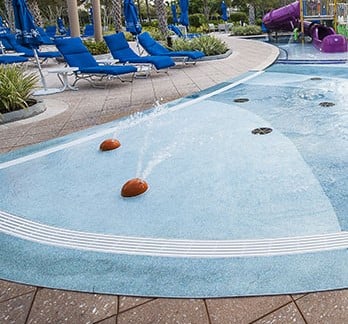Comparing Playground Surfacing
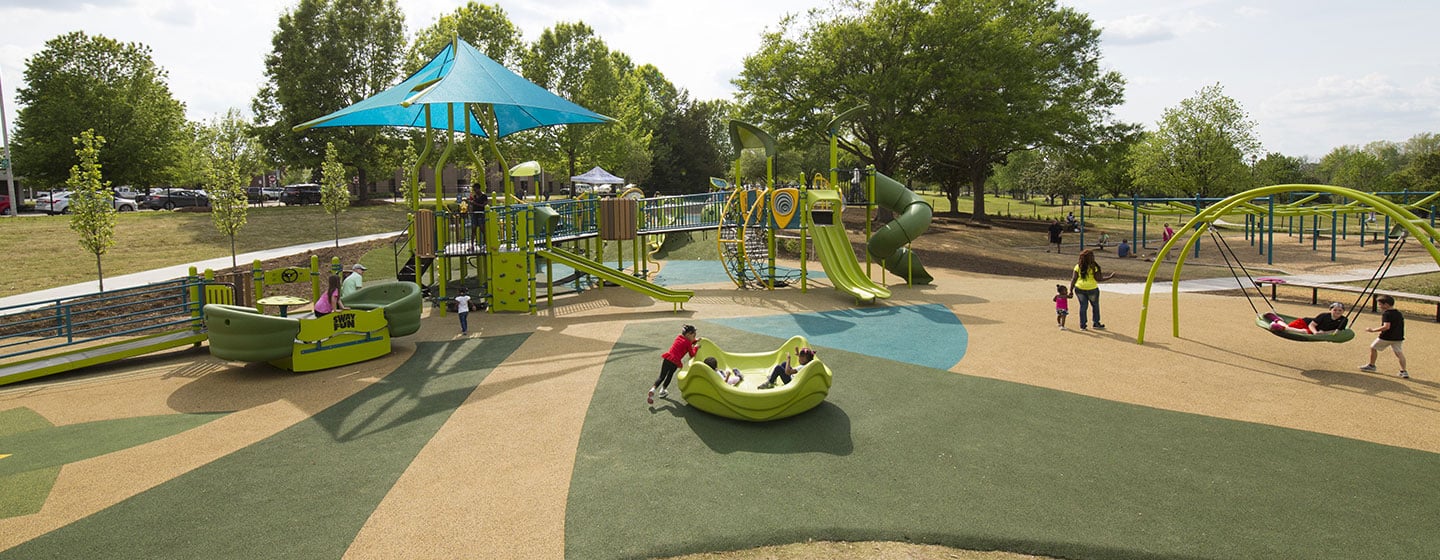
The safety of children playing on your playground is undoubtedly a top priority, which means careful consideration must be taken when choosing a playground surface. Bumps and bruises will happen when kids play hard, but the right playground surface can eliminate the risk of more serious mishaps.
Explore all the differences in our playground surfaces with our comparison chart, then contact a consultant about surfacing for your playground.
Factors to Consider When Choosing a Playground Surface
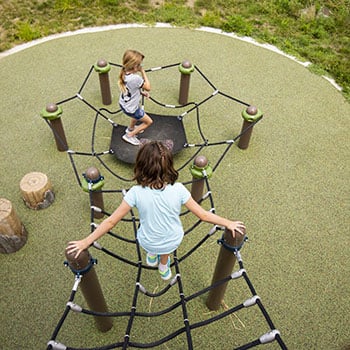 When determining what surfacing is best for your playground project, keep these important considerations in mind.
When determining what surfacing is best for your playground project, keep these important considerations in mind.
- Initial purchasing cost
- Installation requirements and costs
- Ongoing maintenance needs and cost
- Long-term durability
- Lifespan of surface
- Visual appearance
- Degree of safety
- ADA compliance
Types of Playground Surfacing
Playground surfacing materials vary widely in terms of safety, accessibility, cost, and required maintenance so it’s important to understand what’s available and the advantages and disadvantages of each. The best surfacing solution for your playground will meet your unique objectives and create a space that is fun, safe and beautiful for years to come.
Below are several playground surfacing options to consider along with some general advantages and disadvantages of each.
Loose-Fill Material
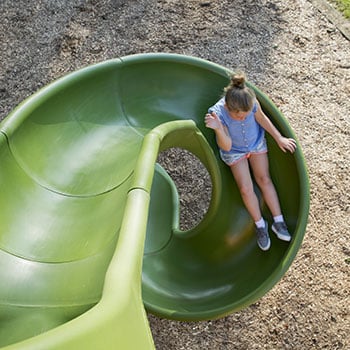 Engineered wood fiber (EWF), playground sand, wood chips and pea gravel are considered loose-fill material.
Engineered wood fiber (EWF), playground sand, wood chips and pea gravel are considered loose-fill material.
- This option has the least expensive upfront costs and is easy to install. Also, it shifts and moves on impact protecting long bone injuries from falls.
- However, loose-fill material requires more maintenance to maintain the appropriate depth for Consumer Product Safety Commission (CPSC) guidelines and aren't as easy for children and parents who use wheelchairs and other mobility devices to navigate. They can also be more limiting from a design standpoint.
- If selecting EWF, be sure to request documentation from the manufacturer showing the source of the product and ADA accessibility testing results.
Resilient Tiles
Such playground safety tiles are mainly used for wheelchair access paths and high wear areas because of cost considerations.
- Factory-engineered tile materials can provide a guaranteed critical fall height value and require little maintenance. They are also easily replaceable and come in a variety of color options.
- The tiles can be either interlocking or adhesive.
Synthetic Turf
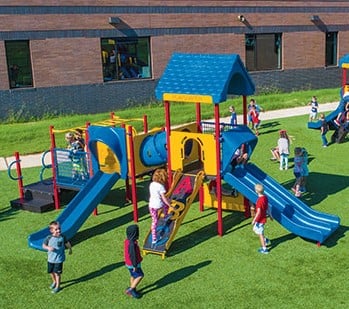 Synthetic turf gives a more natural appearance and texture than other manufactured rubber surfacing options.
Synthetic turf gives a more natural appearance and texture than other manufactured rubber surfacing options.
- It maintains cooler surface temperatures and is available in a variety of color and densities. Many synthetic turf surfaces meet the American Society for Testing and Materials (ASTM) requirements for fall height and accessibility from the ADA. Even more, turf requires less maintenance than loose-fill material and will fit mid-range budgets.
Poured-In-Place Rubber
Poured-in-place rubberized surfacing is durable, highly elastic to prevent injuries and a great option for high-use areas.
- It is also available in a wide variety of colors and shapes and can be embedded with designs.
- These surfaces often have more upfront costs, but require significantly less maintenance than other playground surfacing options.
Bond-In-Place Rubber
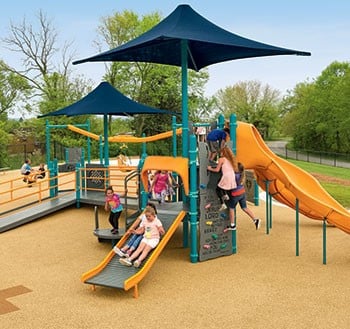
Bond-in-place surfacing is a durable playground safety surfacing option with its lifespan extending beyond many traditional pour-in-place surfaces.
- It is comprised of engineered pebbles chemically bonded together with an added cushioned layer of recycled rubber, is easy to maintain, is UV resistant and withstands climate variations.
- It also meets all safety and accessibility standards and is easy to customize designs or patterns.
Water Play Surfacing
Porous and non-porous water play surfacing are a durable, chlorine-resistant, UV light stable choice for a water play environment.
- This bond-in-place surfacing is the only water play surfacing choice available in a porous and non-porous option that can be used indoors or out.
Choosing a Playground Surface
In addition to safety and accessibility, it’s important to consider how your playground and surrounding areas will be funded and maintained over the years. Weekly maintenance can make loose-fill options quite expensive over time. KABOOM!, a national non-profit dedicated to bringing play to all kids, estimated that one school district spent an average of $6,000 per year per school maintaining playground wood chips. If there is no room in the budget for ongoing maintenance, a surface material that won't need to be replaced, replenished or raked to maintain safe levels of surfacing might be the best choice.
Different surfaces can also support and enhance different types of play. For example, poured-in-place rubber surfaces are a great option for play elements with motion and playground bouncers, while offering added safety benefits for the surface under playground climbing structures and overhead events. Or a combination of different playground surfaces may be the best option for your needs – using resilient tiles under slides and to create various accessible pathways and loose rubber across the rest of the playground.
Comparing Playground Surfacing Chart
Unitary Surfacing
| Surfacing Type | Advantages | Disadvantages |
| Bond-in-Place Rubber |
|
|
| Poured-In-Place Rubber |
|
|
| Synthetic Turf |
|
|
| Resilient Tiles |
|
|
Loose Fill
| Surfacing Type | Advantages | Disadvantages |
| Loose Rubber |
|
|
| Sand |
|
|
| Pea Gravel |
|
|
| Wood Chip |
|
|
| Engineered Wood Fiber (EWF) or rubber mulch |
|
|
